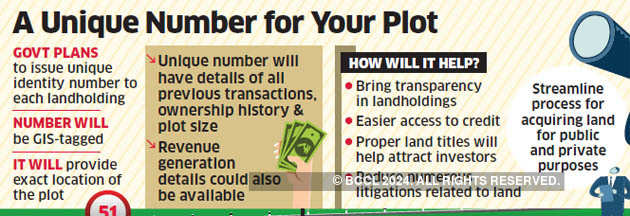For a significant reason for the rural poor, land is both a source of livelihood and an asset. As it is widely known that many informal jobs in the urban sector were lost as the economy was hit by the detestable covid pandemic. This had led to the reverse migration of informal workers from urban areas to rural areas, which in turn had helped revive the agriculture sector in India.
But as a repercussion, it also had led to a greater demand for household resources in rural areas. With pandemic ravaging throughout the country and with rural livelihood being severely affected, the importance of land ownership for access to formal loans as well as government relief programmes became even more evident and a necessity. But the relatively poor availability of clear and updated land titles remains a hurdle.
Reportedly, Indian households hold 77 percent share of their wealth in land and property. This estimation is more than China’s 62 percent and US’s 44 percent as per an RBI Report in 2017. As per economist, Hernando de Soto, absence of a legally robust property documents makes these household land assets ‘dead capital’.
With 1.98 percent of India’s rural population (Census, 2011) homeless in comparison to 38 percent landless rural households (SECC, 2011), make securing rural property an inclusive strategy.
To counter the problem, Prime Minister Narendra Modi had announced post-Covid economic revival package amounting to INR 2 trillion, with underlining focus on ‘land’. This came almost a fortnight after the launch of SVAMITVA, a scheme that aims to improve rural housing land and property rights, using Drone technology and involving Panchayats to monetizing rural housing property and ensuring clarity on property rights.
The question that now stands is that whether both are connected and if connecting them could boost rural economy while also reviving it from covid19-backlash.

With seemingly right ingredients and right intentions, SVAMITVA guidelines demonstrate a unique combination of partnerships, participation, democratization and technology innovation to secure rural property rights and tenures in India.
Nevertheless, Svamitva critically remains crucial for India, as it aims to cover all 6.62 lakh villages and generate hundreds of millions of rural property cards, with substantive financial, employment and economic implications.
The steps recently taken to revive the rural economy through land records clarity aren’t first in the line. It can be noted that efforts to update land records began as early as the 1980s but there is a long road ahead for achieving the final objective of updated and conclusive land records. The most recent effort of the government of India includes Digital India Land Records Modernization Programme (DI-LRMP) scheme.

The dismal state of land records isn’t a recent making but dates back to the British era. Its poor state is due to the failure of the Indian administration to evolve from British-era land policies. In addition, the discrepancies in land record regulations and policies vary widely across Indian states/union territories.
DI-LRMP works to provide a common framework for reporting the progress of land record management by states/UTs, but the heterogeneous nature of guidelines for land record management in India makes the progress non-uniform. Thus, NCAER made a pioneering effort in this direction by launching NCAER Land Records and Services Index (N-LRSI) in 2020.
The index positively assesses states’ performance on two broad dimensions namely digitization of land records and quality of land records. Consequently, many states and UTs have been seen making a conscious effort to improve their ranking on the index despite the covid surge in the country.
As, these improvements are captured in the N-LRSI 2021 findings, Bihar, through its meticulous and conscious efforts, has prominently improved its ranking from the 23rd to 8th position in the index by making substantial progress in the digitization of maps, textual records and registration process.

Though states like Bihar might be making impressive progress, many hurdles plague the system. As it can be noted, in the assessment of DI-LRMP, one of the major hurdles in ensuring continuous updating of land records is the lack of skilled manpower in land record departments in states.
Additionally, the N-LRSI analysis has also brought out the poor interaction and cooperation between land record departments, i.e. the revenue department as the custodian of written records, the survey and settlement department, managing the spatial records and the registration department, which is responsible for registering various land transactions.
With weak linkages between the land record departments, it has led to huge discrepancies over the land ownership rights which emphatically has led to the legal dispute over the definition of boundaries and the extent of a land plot.
With such poor interdepartmental synergy, aspiring for updated and accurate records will always be a distant goal and states/UTs, thus a calibrated conscious approach to rectify this default should be made by the state authorities.
Thus in the pursuit to enhance the land record system in rural India, strengthening of these institutions is required. The improved system of land records is likely to facilitate the efforts that some states and union territories are making to ease land transactions, like lowering stamp duties by the Maharashtra government, to meet its increasing demand for housing, infrastructure. Finally, these efforts are going to be instrumental for the health of India’s rural economy.

